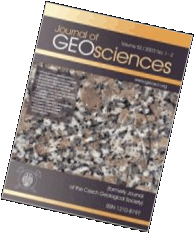 Export to Mendeley
Export to MendeleyBohemian Massif
volcanic rocks
apatite
fission tracks
K-Ar dating
thermal events
stress field
Original Paper
Apatite fission track implications for timing of hydrothermal fluid flow in Tertiary volcanics of the Bohemian Massif
Journal of Geosciences, volume 52 (2007), issue 3-4, 211 - 220
DOI: http://doi.org/10.3190/jgeosci.014
Late Cretaceous to Palaeogene subvolcanic/volcanic rocks from the Bohemian Massif were subjected to apatite fission track (AFT) and K-Ar dating. Striking discrepancies between the AFT and K-Ar ages encountered in most samples cannot be explained by slow cooling rates because of the small sizes and shallow emplacement depths of the subvolcanic bodies. Instead, apatites from these rocks are believed to have re-entered the total annealing zone during episodes of hydrothermal fluid activation along major faults and dyke contacts. The presence of two such thermal disturbances can be inferred from the available data in the Late Oligocene (28 to 26 Ma) and the Early Miocene (20 to 16 Ma) times. The older episode is manifested in the Ohře/Eger Rift region and in the Elbe Zone, while the younger seems to be limited to the former area only. The distribution of the regions with the increased hydrothermal fluid flow was controlled by the crustal weaknesses, the presence of magmatic centres and by the regional tectonic stress field.
Webdesign inspired by aTeo. Hosted at the server of the Institute of Petrology and Structural Geology, Charles University, Prague.
ISSN: 1803-1943 (online), 1802-6222 (print)
email: jgeosci(at)jgeosci.org


IF (WoS, 2024): 1.3
5 YEAR IF (WoS, 2024): 1.4
Policy: Open Access
ISSN: 1802-6222
E-ISSN: 1803-1943